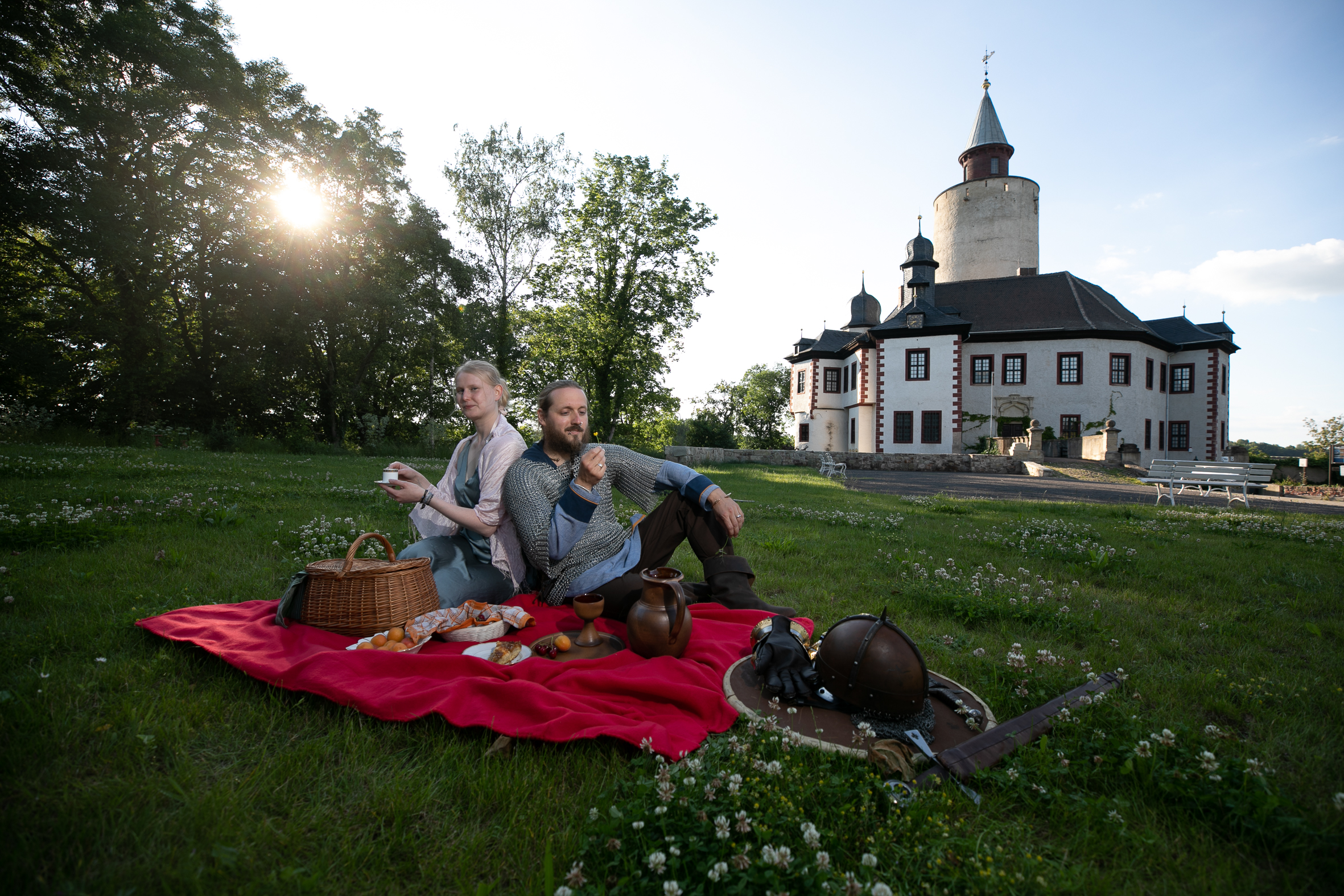September 18th 2013: Under the hashtag #AskACurator Twitter users could ask curators of more than 600 museums in 35 countries questions about their exhibitions. Museum Burg Posterstein took part in it. – This is a review.
At Museum Burg Posterstein / Posterstein Castle (Twitter: @burgposterstein) both the museum’s director and Marlene Hofmann (curator of the permanent exhibition “Wehrhaft – Wohnhaft – Haft” on the function of the keep at a medieval castle in 2012) answered questions on behalf of the museum. Right from half past 9 in the morning Twitter users asking questions kept us busy.
Media work, museums & social media
The first questions asked were about social media and media work in our museum. – One of our favourite subjects. You find our answers here.
@BurgPosterstein wie begleitet ihr medial eure Ausstellung #Völkerschlacht #Napoleon-Karikaturen? Sind Fotos erlaubt? #askacurator
— Tanja Praske | Kultur-Museum-Talk (@TanjaPraske) September 18, 2013
(How do you monitor your Napoleon / battle of Leipzig exhibition in the media? Is it allowed to take pictures?)
@BurgPosterstein wie bewertet ihr die #SocialMedia für die Kulturvermittlung? PR, Austausch, Zielpublikum … #AskACurator
— Tanja Praske | Kultur-Museum-Talk (@TanjaPraske) September 18, 2013
(How do you rate social media in culture sector? PR, discussion, target groups…)
Tanja Praske is a German museum expert, writing very interesting blog posts on museums & social media. Next question came from another castle in the middle of Germany, not far away from Posterstein castle:
@BurgPosterstein Wie kommt es, dass ihr euch so um social-media bemüht und ansonsten die Thüringer Museumslandschaft kaum? #askacurator
— Schloss Friedenstein (@Friedenstein) September 18, 2013
(How come, you are one of the view Thuringian museums engaging in social media?)
Framing content and designing exhibitions
Then we had a longer debate with @friedenstein and @Beatrice078029 on designing exhibitions and framing content – huge questions, that we tried to answer as good as we could in 140 signs:
@BurgPosterstein @Friedenstein Bedenken Sie bei der Ausstellungsgestaltung, dass Sie mit Ausstellungen Wahrnehmungen von Kunst beeinflussen
— Beatrice Miersch (@Beatrice078029) September 18, 2013
(When designing an exhibition – do you have in mind that you influence the visitors view on art?)
@BurgPosterstein @Friedenstein Sprechen Sie damit auch ein breites Publikum an? Oder eher Fachbesucher?
— Beatrice Miersch (@Beatrice078029) September 18, 2013
(Do you address a bigger target group or experts with your exhibitions?)
@BurgPosterstein @Friedenstein Und wie haben sie diese unterschiedlichen Gegenstände gestalterisch zusammen gebracht?
— Beatrice Miersch (@Beatrice078029) September 18, 2013
(And how do you combine the different elements in your exhibition design?)
Beatrice asked a lot of more questions, too. In the end we decided that she had to write an e-mail to us!
The future of museums
Sebastian Hartmann, another German museum’s expert, who’s writing a popular museum blog, wanted to know about still bigger things – the future of museums:
Frage zum #AskACurator an ALLE mitmachenden Museen (D): "Wie sieht eure/Ihre Idee vom Museum der Zukunft aus?" Freue mich auf Antworttweets!
— Seb 🚀 2022 (@MuseumsHeld) September 18, 2013
(How is your idea of the future of museums?)
Are bloggers welcome at museums?
Yet another very interesting question came from Tanja Praske, who asked about how the museums dealt with bloggers:
An alle von #askacurator: Wie steht ihr #Museen zu #Bloggern? Geht ihr aktiv auf sie zu? Eigene Kontaktaufnahme, notwendiges Übel, Chance
— Tanja Praske | Kultur-Museum-Talk (@TanjaPraske) September 18, 2013
(How do you handle bloggers? Do you contact them personally? Do you see them as a burden or as an opportunity?)
And of course, for us – blogging ourselves – bloggers are an opportunity and a complement to local journalists – unfortunately we don’t know that many museum bloggers in our region (so don’t hesitate to contact us!).
To sump up,#AskACurator Day 2013 was a great experience for us as a museum and yet another example for how museums can engage with other people and possible future visitors via social media. We enjoyed it and are looking forward to next year’s Ask A Curator.
We collected all questions and answers in a separate story on Storify. – There you can read the detailed questions and answers, too.
P.S.: There will be a #AskACurator Day in 2014 as well, just look for the hashtag on Twitter. But until that, don’t hesitate to ask us via e-mail, comments, Twitter or Facebook.
(Marlene Hofmann)




















